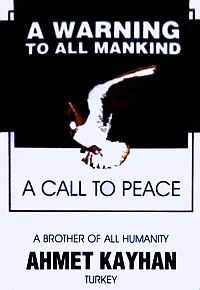 The 2017 Nobel Peace Prize has been awarded to the Geneva-based International Campaign to Abolish Nuclear Weapons (ICAN).
The abolition of all weapons of mass destruction was a prospect very
dear to the heart of Master Ahmet Kayhan. The following invitation to
peace was one of the products of his concern. It was prepared on the
occasion of the fiftieth anniversary of Hiroshima and Nagasaki, in 1995.
Though it is a bit dated in some respects, its backbone is still
extremely pertinent.
The 2017 Nobel Peace Prize has been awarded to the Geneva-based International Campaign to Abolish Nuclear Weapons (ICAN).
The abolition of all weapons of mass destruction was a prospect very
dear to the heart of Master Ahmet Kayhan. The following invitation to
peace was one of the products of his concern. It was prepared on the
occasion of the fiftieth anniversary of Hiroshima and Nagasaki, in 1995.
Though it is a bit dated in some respects, its backbone is still
extremely pertinent.Humanity has recoiled before the enormity of the disaster that is nuclear war by willfully choosing to forget how terrible it is. We are afflicted with a collective nuclear amnesia. As a result, with the showdown between North Korea and the United States, we are paradoxically even closer to nuclear war today than we were during the cold war. But we cannot afford to—we must not—forget.
Hence, in the spirit of solidarity with both the 2017 Nobel Peace Prize and its recipient(s), the original document is being reposted below. (It was earlier published as Appendix E in The Secret of Islam, Berkeley, CA: North Atlantic Books, 2003. It is also available as an appendix here. Master Kayhan’s earlier missive of 1987, “An Invitation to Peace,” can be found here. And see also this.) Illustrations, which were absent from the original, have been added for this posting.
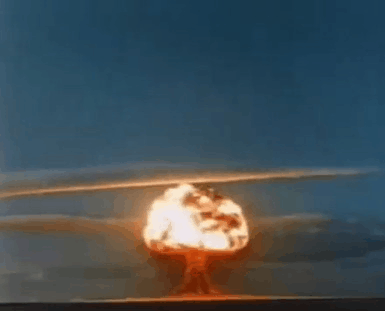
Among his multifaceted activities in the service of humanity, Master Ahmet Kayhan has also been active in the field of peace. Up to now, he and his friends have drafted three invitations to world peace in opposition to weapons of mass destruction, of which the last is reprinted below. The second, titled “Invitation to Peace” (1987), was sent to major heads of state and influential people and was accompanied by wide acclaim. Respondents in favor of the message included Pope John Paul II, the President of France, and the President and Prime Minister of Israel.
It is the Master’s firm conviction that if mankind is to have a future, nuclear, biological and chemical weapons must be abolished. Their existence poses an ongoing threat, and unless this is done, Doomsday will sooner or later be brought about through mankind’s own hands.
WARNING: A CALL TO PEACE
(This message has been drafted in collaboration with a select group of retired professors who share the concern expressed hereunder and who, taking pity on the human race, have seen it fit to issue this declaration. We of the Republic of Turkey, out of compassion for all humanity, and all creatures vegetable and animal—having seen clearly that this material and spiritual hellfire, the atom, will incinerate the whole world and reduce it to ashes—have issued this plea for peace as against nuclear warfare, to be delivered to the United Nations and all governments aspiring to human rights. This is not to say that we ignore, or condone, the use of other toxic weapons, the perils of the peaceful atom (such as the radioactive emissions from Chernobyl), or indeed any toxic releases into the environment of whatever amount or kind. The atom has already killed people without any bomb being thrown: did human beings come into this world to destroy each other?This message is an admonition to and an onus on all human beings. We leave the final decision to the United Nations, beginning with the United States of America.
Fittingly, the message was prepared between July 16 and August 6, 1995.)
August 6, 1995.
That date is the fiftieth anniversary of Hiroshima. It is the semicentennial of the first use against human beings of the weapons that are going to destroy mankind. It is the anniversary of the first rehearsal of doomsday.With the delivery of that bomb, a new age opened in human history. In this age, human beings constantly live under the shadow of a disaster that will strike suddenly and without warning. In spite of important steps taken in recent years in the direction of peace, we are not yet free from the shadow of that threat.
Ever since the fall of the Berlin Wall and the Soviet empire, we have entered a relatively more peaceful and relaxed environment. It is also true that some significant advances have been made in the direction of nuclear disarmament. But in spite of this, we are still very far from where we ought to be.
Forgetfulness is an affliction of human memory. How soon have we forgotten that we had been living on the brink of “Mutual Assured Destruction” (aptly shortened to MAD) until just yesterday? Have nuclear weapons, perchance, all gone off to another planet? Or have we shown the effort necessary for their eradication, and been successful therein?
The truth is that none of these have happened. What has happened is that we have all become immersed in a deep complacency and heedlessness. Some among us have even prophesied “the End of History”. We all seem to think that the danger of a Third World War is gone forever.
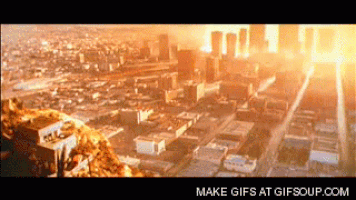 But
we are deeply mistaken. Even in these carefree days, aren’t wars being
fought and genocide practiced in Bosnia, in Rwanda? Do we seriously
think that mankind, which has failed to make war in only 300 of the last
5600 years, has given up its penchant for war forever? On the contrary,
it is much more probable that we will continue to spend 95% of the
following years in warfare.
But
we are deeply mistaken. Even in these carefree days, aren’t wars being
fought and genocide practiced in Bosnia, in Rwanda? Do we seriously
think that mankind, which has failed to make war in only 300 of the last
5600 years, has given up its penchant for war forever? On the contrary,
it is much more probable that we will continue to spend 95% of the
following years in warfare.Global annual arms expenditures have passed the $ 1 trillion mark and are continuing to increase, in spite of the fact that the cold war is over. How many children could not be fed with those $ 1 trillion, how many sick people could not be cured, how many countries not developed?
No one can guarantee that two small countries will not confront each other tomorrow. Nor can anyone guarantee that larger ones will not be sucked into the conflict. When that day comes, the weapons of mass destruction, now sleeping silently by the thousands in their silos and by the tens of thousands in submarines, on airplanes, military vehicles or in their protective igloos, will be waiting for us—or our children—just around the corner. By then, it will be too late for remorse over the fact that we failed to get rid of them while we still had the chance.
Do not imagine that the horrifying nature of these weapons will prevent them from being used forever. When he invented dynamite, Alfred Nobel was elated because he thought that he had found a weapon terrible enough to dissuade people from waging war. But people went right on fighting, this time using dynamite. You probably know that the Nobel prizes stem from the disillusionment and guilt of the man who instituted them. As for the First World War, in which dynamite was used more than ever before, its perpetrators called it “the war to end all wars”. The exact opposite happened.
Yet, now is just the right time. A golden opportunity is at hand. While a more or less peaceful atmosphere prevails, while time is plenty and circumstances favorable, we must act quickly to do away with weapons of mass destruction before they do away with us. Individuals, organizations and societies should do everything within their power to achieve this end. (If you can’t do anything else, tell a friend who’s uninformed.) If we miss this golden opportunity, we may not get a second chance.
But you may be saying: “What’s all the fuss about?” In these days when we are living through a springtime of peace, perhaps the winter of war, even a “nuclear winter”, seems very remote to you. But if we do not make preparations during the spring and summer, our chances of surviving that winter are nil. And the first and most important thing to be done is to destroy—without exception—all weapons of mass destruction.
What will happen otherwise? Then you haven’t heard, or perhaps you have forgotten. In that case, if you wish, let’s crack open the gates of Hell and take a look inside.
The Beginning
Although Hiroshima was the first example of the use of atomic weapons against human beings, it wasn’t the first atomic bomb to be exploded. The world’s first atomic bomb, with a destructive force of 20 kilotons (equivalent to 20 thousand tons of TNT) and code named “Trinity”, was detonated three weeks before, on July 16, 1945, at Alamogordo in the United States of America. “Trinity” here does not refer to the Christian Trinity, but rather to the triad of bombs comprised by this bomb in addition to those dropped on Hiroshima and Nagasaki. There is deep symbolic significance in the fact that this first bomb was exploded near the village of Oscuro (“dark”) at the vicinity called Jornada del Muerto (“death journey”).A distinguished group of visitors were present that day to witness the explosion from a distance of 16 kilometers. Their first impressions are important to any understanding of the dimensions of the phenomenon.
Among the visitors were military and government officials, as well as scientists who had worked on the manufacture of the bomb. These were not religious people. In fact, most were devoid of any religious inclination whatsoever. And yet, it is striking that all, in relating their impressions later on, felt the need to use expressions taken from the domain of religion. One of the generals present, for example, said: “The whole country was lighted by a searing light with an intensity many times that of the midday sun... Thirty seconds after the explosion came, first, the air blast pressing hard against the people and things, to be followed almost immediately by the strong, sustained, awesome roar which warned of doomsday and made us feel that we puny things were blasphemous to dare tamper with the forces hitherto reserved to the Almighty. Words are inadequate tools for the job of acquainting those not present with the physical, mental and psychological effects. It had to be witnessed to be realized.”
Physicist J. Robert Oppenheimer, known as “the Father of the Atomic Bomb”, was reminded of verses from the Bhagavad Gita, the sacred book of the Hindus: “I am become Death, shatterer of the worlds.”
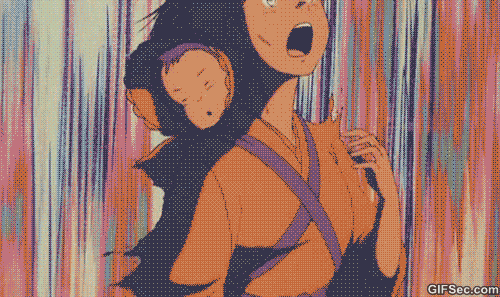 These
are the words of eyewitnesses watching the event from a distance of 16
km. Let us now take a look at those who experienced the Bomb at closer
range— the survivors of Hiroshima.
These
are the words of eyewitnesses watching the event from a distance of 16
km. Let us now take a look at those who experienced the Bomb at closer
range— the survivors of Hiroshima.“The details and the scenes were just like hell.”
“And when we looked back it was a sea of bright red flame.”
“I saw fire reservoirs filled to the brim with dead people who looked as though they had been boiled alive.”
“They looked like boiled octopuses.”
As the internal organs of those at a distance of 1 kilometer boiled away, they were seared to smoking black char in the fraction of a second. The skins of those further away were blistered by the thermal pulse, the shock wave tore their skins off their bodies; with their skins hanging off them like threads they threw themselves into the rivers, hoping to cool off. Little did they know that the rivers themselves had been heated to the boiling point. As people evaporated, the blinding light bleached everywhere on the walls behind them except where their shadows had been. Go see for yourself, those shadows are on those walls to this very day. Birds ignited in mid-air. “Doctor,” a patient was saying a few days later, “a human being who has been roasted becomes quite small, doesn’t he?”
70 thousand men, women and children, the great majority of whom were civilians, died in the very first instant of the explosion. 130 thousand more died of radiation poisoning and burns within the next few months. Another 220 thousand had died within five years. More than half the population of Hiroshima perished, and two-thirds of the city was razed to the ground. Almost nothing above knee-level was left.
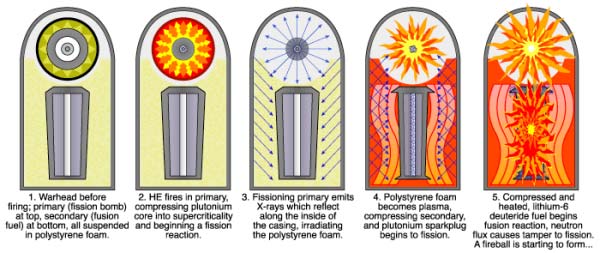 Now
consider the fact that the bombs thrown on Hiroshima and Nagasaki were
mere firecrackers compared to those of our day. The hydrogen bomb,
discovered in the succeeding years, is a hundred to a thousand times
more powerful than an atomic bomb. During the arms race they entered in
the years of the cold war, America and Russia produced tens of thousands
of these weapons. They now sleep silently in their silos, several
mounted on each missile, waiting for the day when they will strike you,
your children or your grandchildren. That day those missiles will
fulfill the purpose for which they were designed, hurtle thousands of
miles in 15-20 minutes, and rain universal death everywhere.
Now
consider the fact that the bombs thrown on Hiroshima and Nagasaki were
mere firecrackers compared to those of our day. The hydrogen bomb,
discovered in the succeeding years, is a hundred to a thousand times
more powerful than an atomic bomb. During the arms race they entered in
the years of the cold war, America and Russia produced tens of thousands
of these weapons. They now sleep silently in their silos, several
mounted on each missile, waiting for the day when they will strike you,
your children or your grandchildren. That day those missiles will
fulfill the purpose for which they were designed, hurtle thousands of
miles in 15-20 minutes, and rain universal death everywhere.The Effects of a Nuclear Bomb
There is no end to the list of the destructive effects of nuclear (and thermonuclear) weapons, which have no purpose of existence other than to wipe out humanity and human civilization. Yet at first count, these can be summarized under four major headings. They are: 1. the initial nuclear radiation, 2. the heat pulse, 3. the blast wave, and 4. radioactive fallout. Other more insidious effects, such as the electromagnetic pulse, the destruction of the protective ozone layer of the earth, and the “nuclear winter” effect, were only discovered decades afterwards.Sober scientists have investigated these effects in great detail and have amassed data that fill many volumes. Space does not permit us to summarize all of these here. Still, we intend to describe the effects of a nuclear explosion, if only in outline. A 1-megaton device, equivalent to the destructive force of 1 million tons of TNT, is a medium-size weapon in today’s nuclear arsenals. We shall take this value—equal to 80 Hiroshima bombs—as a yardstick.
At the instant of detonation, an incredibly hot, bright fireball is formed. The temperature of this fireball is millions of degrees centigrade, and its pressure is millions of times greater than ordinary atmospheric pressure. All unprotected humans are killed and everything is destroyed within a circle of 15 square kilometers, with “Ground Zero”, the point directly below the explosion, as its center. This is the initial nuclear radiation.
The second effect is the heat pulse. This is a wave of searing light and intense heat. If the fireball is close to the ground, and touches it, it instantly vaporizes or incinerates everything within it. The heat pulse lasts ten seconds and inflicts second-degree burns on persons at a distance of 15 km. Its sphere of influence is greater than 700 square kilometers.
As the fireball expands, it creates a blast wave expanding in all directions. This is the third effect of a nuclear bomb. This shock front is a wall of compressed air which moves away from the center at supersonic speeds, dragging winds that move at 300 km per hour behind it. It flattens almost all buildings within a radius of 7 km and an area of 100 square km, and severely damages all buildings in an area of 320 square km and a radius of 13 km. The blast wave lasts for a few seconds and destroys buildings by surrounding them in all directions. 3 km from Ground Zero, wind speeds reach 650 km per hour and at 6 km from Ground Zero, they reach 300 km per hour. At a distance of 16 km, they hurl broken glass and sharp objects at lethal velocities.
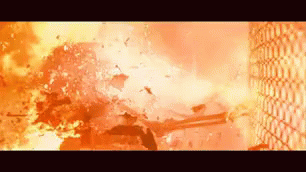 As
the fireball burns, it rockets skyward and reaches a height of 10 km.
For ten seconds it cooks the city beneath it. People at a distance of 15
km now receive third-degree burns and most probably die on the spot.
Those closer catch fire and perish instantly. In a circle of 15 km
radius and 700 square km area, flammable materials such as paper and dry
leaves are ignited, giving rise to mass fires.
As
the fireball burns, it rockets skyward and reaches a height of 10 km.
For ten seconds it cooks the city beneath it. People at a distance of 15
km now receive third-degree burns and most probably die on the spot.
Those closer catch fire and perish instantly. In a circle of 15 km
radius and 700 square km area, flammable materials such as paper and dry
leaves are ignited, giving rise to mass fires.As the fireball rises, a mushroom cloud is produced due to the condensation of water vapor in the air. If the explosion has occurred near the ground, a great crater is formed and the bomb throws tons of debris and earth into the air. This mixture later rains down in the form of a fine ash. This phenomenon, called radioactive fallout, is the fourth effect of a nuclear bomb, and comprises about 300 different kinds of radioactive isotopes. This fallout lethally contaminates an area of 2500 square km, “lethal contamination” being pedantically defined, in the present context, as the amount necessary to kill off half the able-bodied young adult population.
Let us now suppose that a 1-megaton bomb is detonated 2.5 km above the city you live in or a city close by, and that you are standing at a point about 3 km distant from Ground Zero. Your physical body could not survive, of course, so we assume you are present “in spirit”. What would you see?
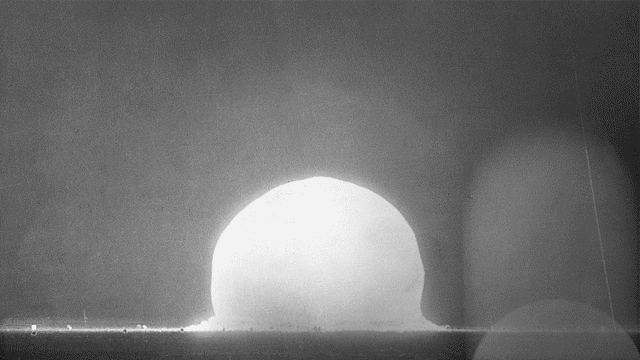
First, the blinding white light of the fireball lasts about 30 seconds. Simultaneously, searing heat melts windows, automobiles, lampposts and everything made of glass and metal as though they were made of butter. People in the street are instantly ignited and, within a very short time, transformed into puddles of tar. Five seconds after the light, the blast wave hits. Some skyscrapers are crushed as if squeezed by a giant fist, while others are torn off their foundations and hurled through the air like matchsticks. Meanwhile, the fireball has been burning in the sky for ten seconds. A little later, everything is engulfed in thick clouds of smoke and dust. The mushroom cloud, which happens to have a diameter of 20 km, cuts off the sunlight, and day turns into night. Within a few minutes, the heat pulse ignites broken gas mains, as well as gas and oil tanks. Fires begin spreading in the dark. A radioactive rain may fall in the meantime, as a result of the extraordinary weather conditions produced. Before long, all the individual fires combine to produce one gigantic fire. In such a mass fire the temperature reaches one thousand degrees centigrade, melting glass and metal and burning ordinarily fireproof materials. Depending on the condition of the winds, either a conflagration or a “firestorm” occurs. In the first case, the whole city is simply burned to the ground. Otherwise, winds being sucked into the center create a huge firestorm, forming a single fire of great heat. Because both kinds of fire consume the oxygen in the air and produce noxious fumes, people in the shelters are choked to death at the same time that the heat pulse is turning the shelters into pressure cookers. In this vast theater of events, all the agony and death scenes of Hiroshima are relived, with the difference that the death count now reaches millions instead of merely hundreds of thousands.
The Present Situation
 During
the long winter years of the cold war, America and Russia held the
world on the brink of a precipice. There were only two good things about
this “Balance of Terror”: One, by the undeserved grace of God we were
spared a nuclear war, and two, the parties kept their nuclear weapons
and materials under stringent control.
During
the long winter years of the cold war, America and Russia held the
world on the brink of a precipice. There were only two good things about
this “Balance of Terror”: One, by the undeserved grace of God we were
spared a nuclear war, and two, the parties kept their nuclear weapons
and materials under stringent control.In time, England, France and China also became members of the “Nuclear Club”, but they too were able to keep their materials under control.
But things didn’t end there. Israel developed nuclear weapons, too. So did India. And because of India, so did Pakistan. Iraq, which tried to develop the Bomb because Israel had it, was stopped for the time being. Other, lesser nations began to stand in line.
It is obvious that there is no end to this process of proliferation. Anyone who does not possess nuclear weapons feels insecure toward those who do, and attempts to arm himself in the same way. The greatest obstacle in the way of success lies not in the difficulty of building a nuclear weapon, but in the difficulty of procuring uranium and plutonium, the materials necessary to make a bomb. But in time, as nuclear reactors are used, not with peaceful purposes for generating electricity, but for plutonium production, this obstacle too will be bypassed.
With the demise of the Soviet Union, serious gaps appeared in Russia’s control over its nuclear weapons. Even if it has not happened yet, the possibility of nuclear material and bombs being smuggled in order to be sold to countries that crave them is a subject for serious concern. Another possibility is that these should fall into the hands of terrorist organizations. As evidenced in the recent example of Japan, a sufficiently fanatical terrorist group will not shrink from using weapons of mass destruction against innocent human beings. Considering how widespread terrorism is in today’s world, it is not difficult to realize what this means.
(When speaking of weapons of mass destruction, biological and chemical weapons are also included in addition to nuclear arms. Space does not permit detailed analysis of these weapons, in spite of their equally disastrous effects, but the present treatment is intended to cover them as well.)
As if the two generations of nuclear weapons—atomic bombs and hydrogen bombs—were not enough, the superpowers were trying to spawn third and later generations of these weapons toward the end of the cold war. Here, the purpose is to selectively enhance one or more of the destructive effects of the atom. Indeed, the nuclear tests conducted by the great powers have only one purpose: to build a more advanced, i.e. worse, nuclear weapon.
In fact, the progress in high-energy physics will only be put to the misuse of building even more terrible weapons in the end, difficult as this may be to conceive. With atomic fission and fusion, physicists had unleashed the energy that powers the sun. Not content with this, they now aim to achieve the energy levels present at the creation of the universe. When that happens, it will be possible to disintegrate not merely the atom, but the fundamental particles of existence, and the way will be open to the manufacture of weapons powerful enough to melt down the entire land mass of the planet.
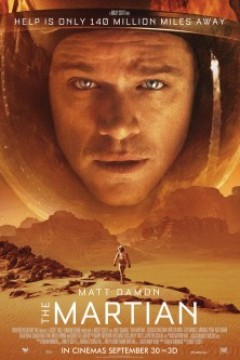 The
superpowers recognized long ago that the destructive force accumulated
in their hands would be sufficient to destroy the world many times over.
It was then that they initiated the exploration of space. The actual,
though unstated, purpose behind
this exploration was (and still is) to ensure that the one or two
persons who would propagate the human race after the world had been
annihilated would be “one of our boys”. This is the truth that lies
behind all the space stations and the attempts to colonize Mars. And
thus we are faced with a phenomenon, the like of which has been
encountered only twice before in the entire history of mankind: The Third Adam.
The
superpowers recognized long ago that the destructive force accumulated
in their hands would be sufficient to destroy the world many times over.
It was then that they initiated the exploration of space. The actual,
though unstated, purpose behind
this exploration was (and still is) to ensure that the one or two
persons who would propagate the human race after the world had been
annihilated would be “one of our boys”. This is the truth that lies
behind all the space stations and the attempts to colonize Mars. And
thus we are faced with a phenomenon, the like of which has been
encountered only twice before in the entire history of mankind: The Third Adam.The Third Adam
Adam was the ancestor, the progenitor of the human race. When humankind was wiped out in a Deluge of water, Noah became the second Adam. And now, unless we take the necessary measures, humanity will be destroyed this time by a deluge of fire, and the human race will start anew with a third Adam.During the days he gave the order to bomb Hiroshima, President Truman wrote in his diary: “We have discovered the most terrible bomb in the history of the world. It may be the fire destruction prophesied... after Noah and his famous Ark.” This Biblical prophecy [2 Peter 3:10] is referred to as “Judgment Day” and “Doomsday” in the Koran. Unless we beware, we shall have fulfilled the forewarnings of the sacred books of the world by our very failure to take precautions. For it has been stated in a Holy Tradition: “We will not destroy men; rather, they will destroy themselves by their very own hands.”
You who are reading or hearing this, do you find any solace in the knowledge that your race will continue from a third Adam? Does the notion of a third Adam comfort you in the face of the fact that you, your children, or your grandchildren will be vaporized in unspeakable agony, the entire biosphere of the earth will be annihilated, the oceans will evaporate and the very crust of the earth will be melted?
What Should Be Done?
 Today,
a Godsent opportunity is at hand. In today’s atmosphere of relative
peace, while the Soviet Union is safely out of the way, let us dismantle
the Doomsday Machine, let us abolish all weapons of mass destruction.
Let us block all the means that would lead to their manufacture. Perhaps
we cannot put an end to war. But we can prevent the destruction of
humanity as a result of war. Tomorrow, when hostilities resume between
nations, it will be too late and cooperation, impossible.
Today,
a Godsent opportunity is at hand. In today’s atmosphere of relative
peace, while the Soviet Union is safely out of the way, let us dismantle
the Doomsday Machine, let us abolish all weapons of mass destruction.
Let us block all the means that would lead to their manufacture. Perhaps
we cannot put an end to war. But we can prevent the destruction of
humanity as a result of war. Tomorrow, when hostilities resume between
nations, it will be too late and cooperation, impossible.The only solution is that no weapons of mass destruction—including, preferably, missiles and delivery systems—should be left in the hands of any nation whatsoever. Because if even only one country has them, the rest will want to possess them as well.
The START agreement on arms reduction is a step in the right direction, but only a very small one. Because it still leaves enough weapons to annihilate each other ten times over in the hands of both sides. This is all or nothing. And it is now or never.
The permanent members of the United Nations must first bring all weapons of mass destruction under strict international control. The continuing experience of the United States, and of the USSR before its demise, proves that such controls and verification can be effective. Later, the present process of disabling and “scuttling” mass destruction weapons should be continued universally.
An Appeal to Everyone
If you are religious, we say to you: the heart of all religions is love. Hatred does not cease by hatred, hatred ceases by love. If you are not, we leave the word to Albert Einstein and Bertrand Russell, two of the most eminent scientists and philosophers of our time: “Remember your humanity, and forget the rest.” What true religion ever ordered the murder of innocent human beings? And what loyalty, ideology or hate is great enough to justify the annihilation of all men, women and children, of all the winged and four-footed animals of the earth, of all its plants, its fishes, its unicellular organisms? Have you no pity for even your own children, your own grandchildren?The time to act is here and now. If we do not do now what we have to do, Behold: the final curtain of human history. See if you care to shoulder the responsibility.
Inferno
The time is an unspecified date in the future. The place is a planet called Earth. All except the smallest countries of the world possess nuclear and other mass destruction weapons. Men have turned their backs on the call of true religions and become progressively more ruthless. God has removed from them the capacity for compassion. They are therefore able to do even less than we are in a position to today.The end will begin near sunset. First, one nation will deliver a bomb on another. Suppose, for example, that America bombs England. England will retaliate. Then America will bomb China. China will bomb France. After these first four bombs, the whole international community will go berserk, everybody bombing everybody else in a thermonuclear free-for-all.
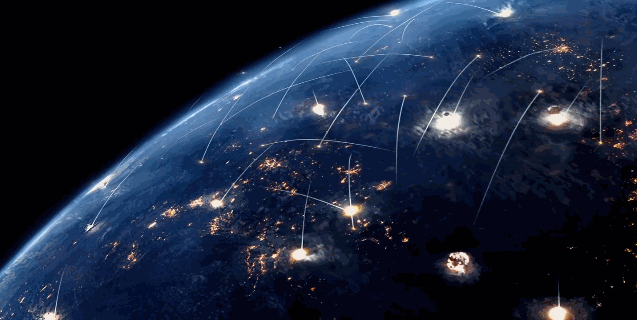 We
said earlier that the Hiroshima and Nagasaki bombs were firecrackers
compared to the bombs of our day. In comparison with an all-out attack
of tens of thousands of bombs, the detonation of one nuclear device
will, in turn, seem like a firefly. Tens of thousands of suns, each many
times brighter than the sun itself, will light all the continents of
the earth. In the areas first targeted, the great majority of people
will be radiated, crushed or burnt to death. Hundreds of millions will
simply be vaporized. Tens of thousands of blast waves will sweep away
the physical existence of the countries of the world like dust in the
wind. Buildings, habitations, factories, installations already on fire
will be shattered, blasted or pulverized out of existence. Then, as the
mushroom clouds bloom, day will turn to night. All the forests of the
world will be set on fire. Because the whole world is burning, there
will be nowhere to escape. As bombs that have not yet been invented but
soon will be enter the scene, mountains will melt and be tossed like
cotton. Both living and unliving things will be burnt to ashes. The
oceans, while evaporating on one hand, will attack the melting land mass
of the earth on the other. Everything will be reduced to a uniform
sludge. This sludge will redistribute under the influence of the
centrifugal forces of the planet, and, when it cools, will solidify like
lava into a surface almost, though not quite, as smooth as glass. And
then... And then, America, Russia and Europe will all be as flat as a
table. Only the natural curvature of the earth will prevent an egg stood
on one end from being seen from afar (if an egg and a human being to
see it could have survived).
We
said earlier that the Hiroshima and Nagasaki bombs were firecrackers
compared to the bombs of our day. In comparison with an all-out attack
of tens of thousands of bombs, the detonation of one nuclear device
will, in turn, seem like a firefly. Tens of thousands of suns, each many
times brighter than the sun itself, will light all the continents of
the earth. In the areas first targeted, the great majority of people
will be radiated, crushed or burnt to death. Hundreds of millions will
simply be vaporized. Tens of thousands of blast waves will sweep away
the physical existence of the countries of the world like dust in the
wind. Buildings, habitations, factories, installations already on fire
will be shattered, blasted or pulverized out of existence. Then, as the
mushroom clouds bloom, day will turn to night. All the forests of the
world will be set on fire. Because the whole world is burning, there
will be nowhere to escape. As bombs that have not yet been invented but
soon will be enter the scene, mountains will melt and be tossed like
cotton. Both living and unliving things will be burnt to ashes. The
oceans, while evaporating on one hand, will attack the melting land mass
of the earth on the other. Everything will be reduced to a uniform
sludge. This sludge will redistribute under the influence of the
centrifugal forces of the planet, and, when it cools, will solidify like
lava into a surface almost, though not quite, as smooth as glass. And
then... And then, America, Russia and Europe will all be as flat as a
table. Only the natural curvature of the earth will prevent an egg stood
on one end from being seen from afar (if an egg and a human being to
see it could have survived).While all this is happening, anyone with access to a spaceship will head for outer space. Some of their rockets will burst on the ground before they can escape. Others able to make it will, deprived of the natural life support systems and supplies of the earth, be able to survive in space for at most only five more years.
By the grace of God, only a single man will survive. He is the one who will be called “the third Adam”.
All this will happen, have no doubt. Unless we take preventive steps now. Do not imagine that you, your children or your grandchildren will be exempt from this fate.
And that is why...
As we sow, so shall we reap. Come, let us sow peace, not war. Let us douse fire with water. We are the stewards, the custodians of this planet. God has entrusted the Earth to us. Come, let us purge the world of this danger of betrayal, and hand it over to the generations who will succeed us. What needs to be done must be done now. Our children and grandchildren have the right to live at least as much as we do.
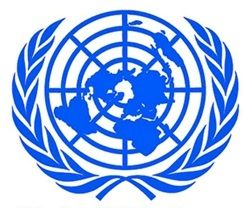 Lover of all creatures, down to the smallest ant;
Lover of all creatures, down to the smallest ant;
Possessor of sound judgment;
Ahmet Kayhan
Turkey
“Next, hunger. After war, hunger too should be abolished. Whatever it takes should be done to achieve this. Without weapons and hunger, humanity will be able to maintain peace for a while. In time, smaller countries would join bigger nations [in regional alliances, somewhat in the manner of the European Community]. Small states would give way to large states, and in the absence of weapons the latter would live in peace. This means not just toxic weapons (nuclear etc.), but all weapons. This is the only solution. There is no other way.”
This plan may be difficult to achieve. Yet it is elating to know that a way out is possible—if it can only be realized.)